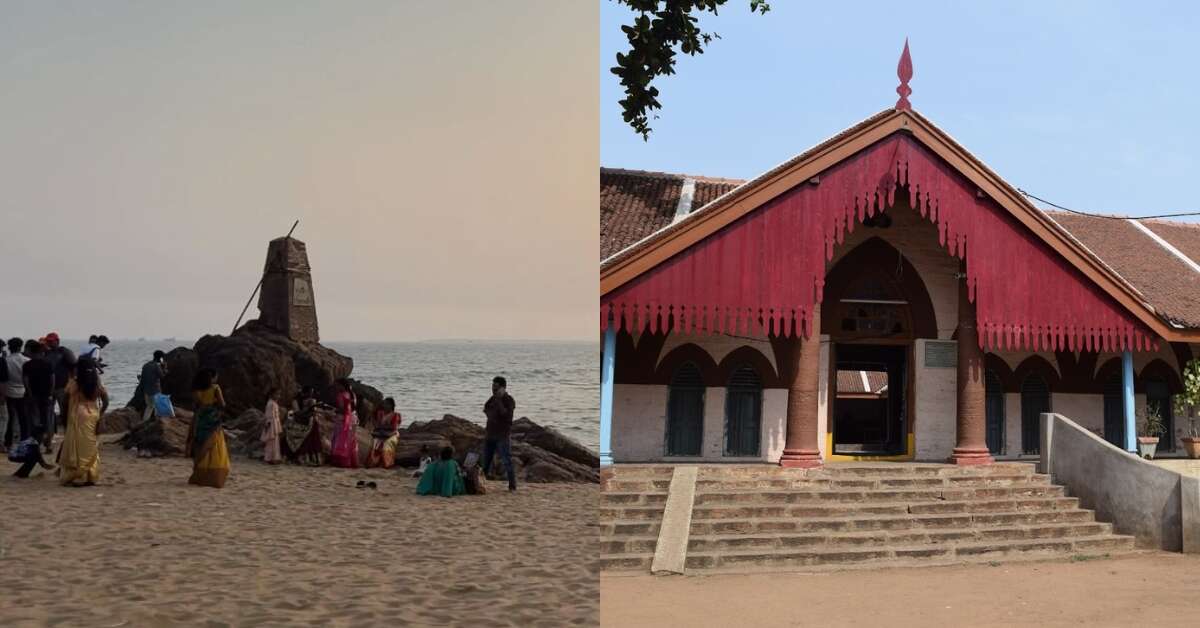

To be human is to be tied to something bigger than ourselves. Whether it is to people we call family, to places we call home, or to things we call ours, we are all intertwined and defined in relation. This nature of connection transcends time, too. Our actions today are tied to the future, and in this very moment, our roots go back to a past that we’ve never experienced, yet it explains the world we live in. The gravity of being conscious of the olden days that shape us, thus, is beyond important. One of the most powerful ways to do so is by paying attention to our heritage, the history we’ve inherited and preserved.
Here in Vizag, we’re fortunate to have some remenants of the city’s heritage still existing among us. While some are well-known, others remain under a veil of mystery. This World Heritage Day, let us remove the veil and take a look at some less-known heritage sites of Visakhapatnam.
The newly built beach road, built for carriages, used to end right here at this point. More interestingly, Scandal Point was said to be the the meeting spot for memsahibs who gathered here in the evenings to gossip! From who danced with whom at last night’s ball to juicy whispers of affairs, arrests, and marriages, they talked about it all.
With its grand portico, supported by elegant Doric columns, ashlar stone masonry, and intricately polished wooden staircases, the building still retains its regal charm. Originally a summer retreat for the queen, the palace features three rectangular halls on each floor, wide verandahs, and high ceilings that have stood the test of time.
The transition from palace to hospital has its own story. The queen, once treated by Dr M Gopala Kini, the first orthopaedic surgeon of King George Hospital, was inspired when she saw his clinic in Bombay (which he had set up after retirement). On medical advice and driven by philanthropy, she donated her palace and land to start a hospital for children.
Dating back to the 3rd century BC, Bavikonda flourished until about 300 AD. Discovered by a shepherd in 1977 and excavated by the State Archaeology Department in the ’80s and ’90s, it revealed an entire Theravada Buddhist complex. Think Mahastupa, vihara, chaitya halls (both circular and apsidal), congregation spaces, and votive stupas.
Perhaps most fascinating is an urn believed to contain a piece of the Buddha’s bone. Roman silver coins and Satavahana lead coins found here point to ancient trade links, connecting Bavikonda to the Roman Empire. This makes it not just spiritual, but a crucial link in maritime history.
The original chapel was later pulled down, and on 2 February 1852, FrTissot laid the foundation stone for the new structure. Over the years, the church served multiple roles. It housed the Sisters of St Joseph from 1858 to 1898 and even served as a boarding home for boys from 1920 until 1939, when the facility was moved to St Anthony’s.
The complex hosts three temples dedicated to Lord Madhava (a swayambhu form of Vishnu), Lord Venugopala Swamy, and Lord Shiva. It is believed that the Madhava Swamy Temple is as old as the famous Simhachalam Temple and acts as its Khsetrapalaka (protector deity).
There’s even a scenic trekking route from here to Simhachalam, and legend has it, a tunnel from the Madhava temple leads straight to the Simhachalam temple. Many also believe that the waterfall here has medicinal properties, making a dip feel both sacred and healing.
Named after Henry Gribble Turner, a former Collector of Vizag, this “satram” was built by several zamindars including Maharaja Gode Narayana Gajapathi Row of Chemudu, who donated land in what was then called ‘Enugula Thota’ (Elephant Lines). Several other local royals including Vizianagaram, Bobbili, Jeypore, the Ankitam, Inuganti, Uppalapati families made generous donations.
With sixteen rooms built around a large central courtyard, this raised rectangular building served early pilgrims and later, patients visiting King George Hospital, which was built around the time and attracted many people from arounf town. Its architecture, with stone columns, intricate floral engravings, and arched windows, is a marvel on its own.
These lesser-known heritage sites of Visakhapatnam inform us about the city’s history and sometimes go unnoticed. So the next time you’re exploring the city, take a moment to seek out these hidden gems!
Stay tuned to Yo! Vizag website and Instagram for more city and news updates.
It's a new week, and there are some new and exciting developments in the world…
Gajuwaka, one of Visakhapatnam’s busiest and most rapidly growing neighbourhoods, is often seen primarily as…
Andhra Pradesh Chief Minister N Chandrababu Naidu has announced a major welfare initiative for women,…
A fire erupted at a steel plant in Visakhapatnam, Andhra Pradesh, following the spill of…
The election for the Deputy Mayor of the Greater Visakhapatnam Municipal Corporation (GVMC) has…
Two retired defence officers from Andhra Pradesh, Colonel K Srinivas and Captain C D N…
Leave a Comment